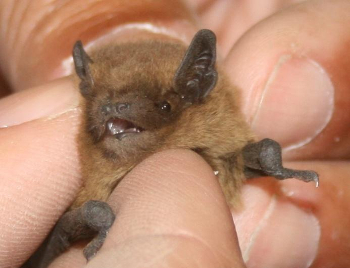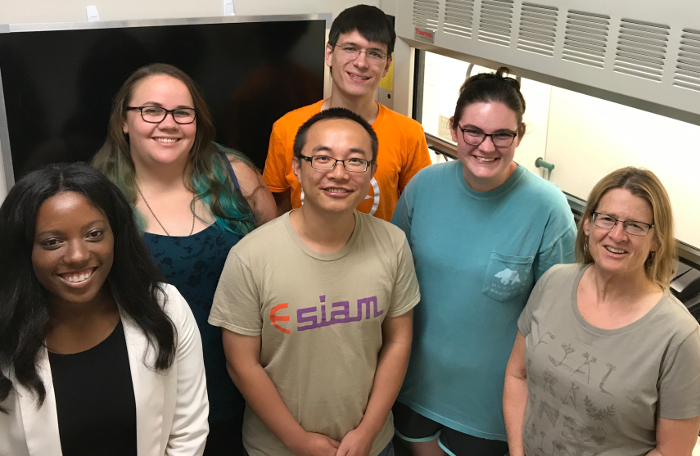2017 SRE Project
Modeling the Immune System Battleground in Host-Virus Conflict
Mentors:
Dr. Colleen Jonsson, NIMBioS; Professor, Microbiology, Univ. of Tennessee
Dr. Fan Bai, Postdoctoral Fellow, Mathematics & Statistics, Texas Tech Univ.
Dr. Christina Edholm, Postdoctoral Fellow, Mathematics, Univ. of Tennessee
Participants:
Alison Adams (Univ. of Georgia Athens); Quiyana Murphy (Univ. of Kentucky); Owen Dougherty (Univ. of Tennessee)

|
| Credit: fs-phil |
Why do certain mammalian species become ill following infection with virus while others do not? How can certain species of mammals harbor and maintain viruses over their life time without any signs of disease? There are numerous examples of the dual nature of viruses, particularly, zoonotic viruses. Zoonotic viruses such as Ebola viruses, SARS coronaviruses, and hantaviruses exist in nature in bat or rodent hosts and only when they accidentally spill over to humans do they cause disease. In general, scientists hypothesize that the disease is caused by an inability to control infection. The immune response plays a vital role in controlling infection within individual hosts. Modeling how viruses control infection in their natural host and those in which they cause disease provides a framework for the discovery of how viruses interact with their hosts and potential new targets for therapeutic intervention.

|
| Project group (from L): Quiyana Murphy, Christina Edholm, Fan Bai, Owen Dougherty, Alison Adams, Colleen Jonsson |
Return to SRE 2017.
NIMBioS
1122 Volunteer Blvd., Suite 106
University of Tennessee
Knoxville,
TN 37996-3410
PH: (865) 974-9334
FAX: (865) 974-9461
Contact NIMBioS


